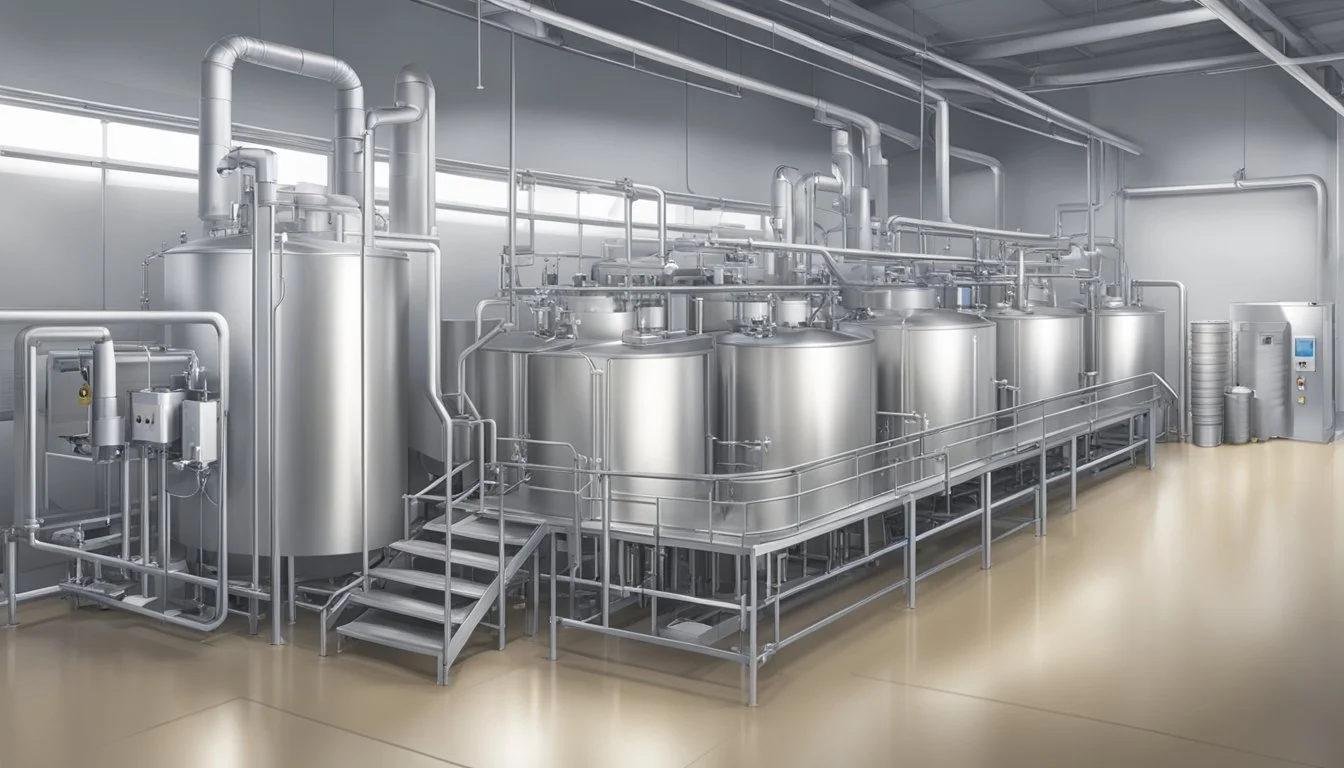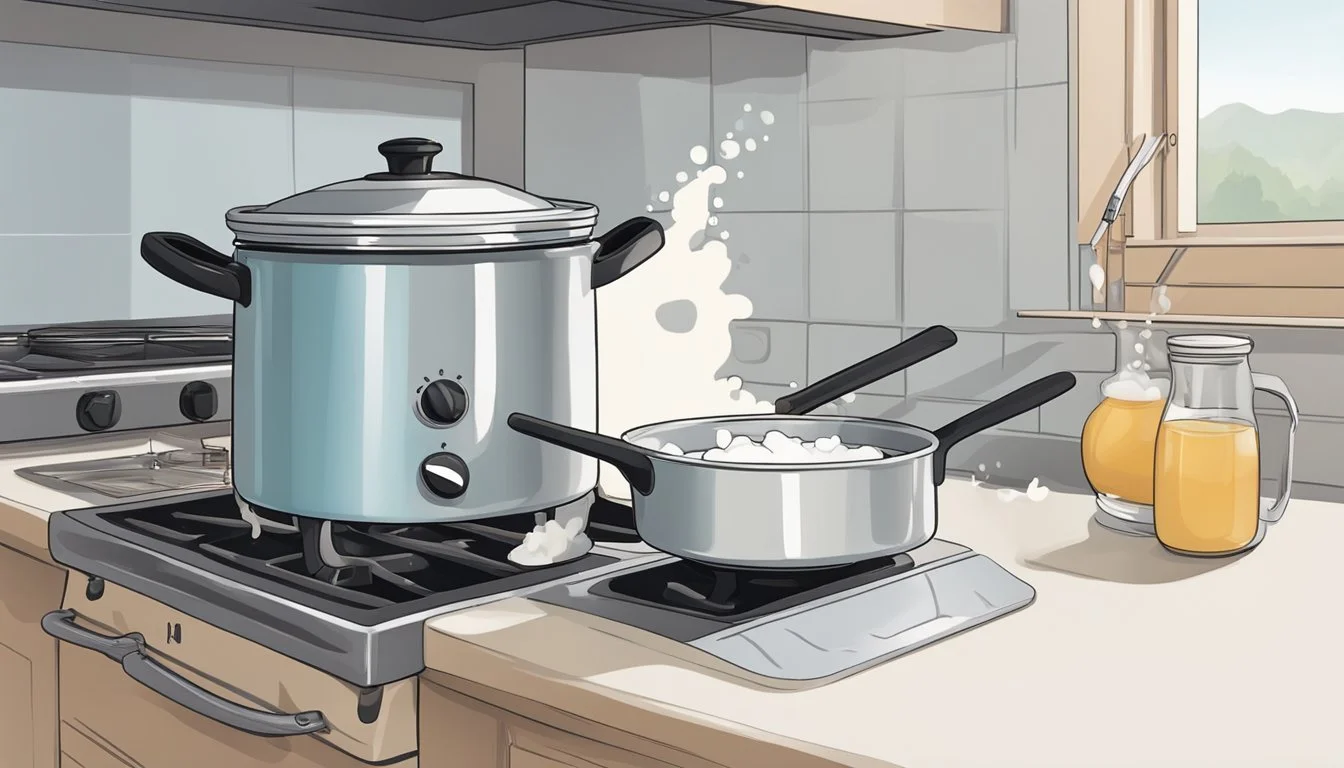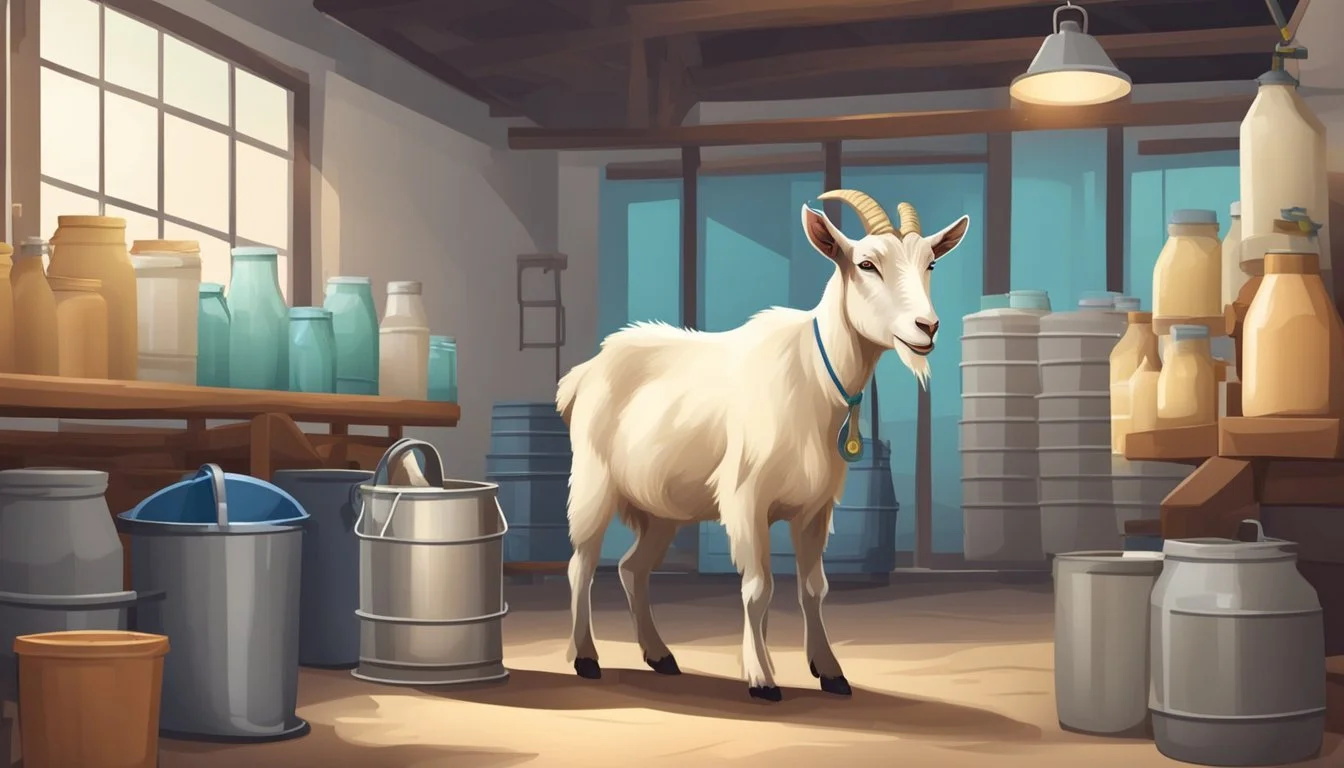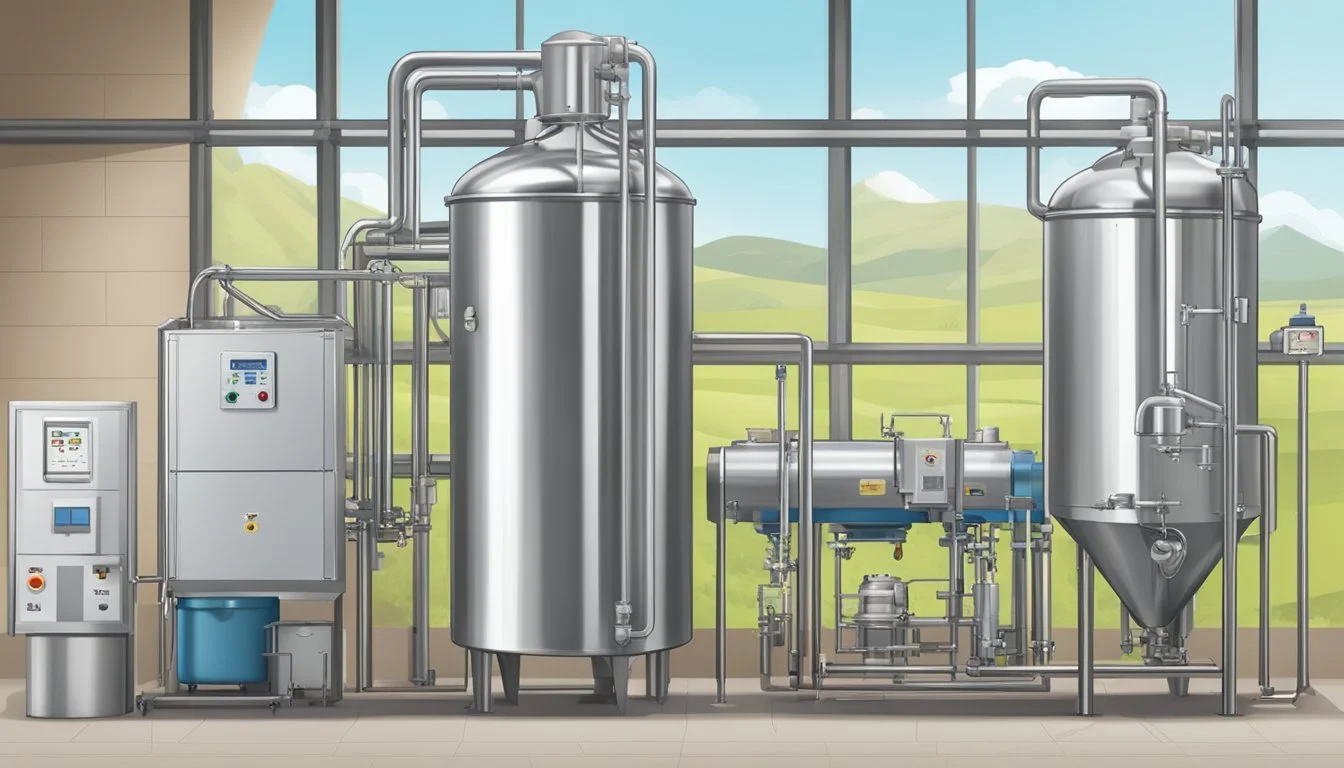How to Handle Goat Milk Safely
Understanding Pasteurization and Dispelling Raw Milk Myths
Handling goat milk with care is essential for both its quality and the safety of those who will consume it. Goat milk can be consumed raw or pasteurized, and each method has its own set of benefits and considerations. When opting for raw goat milk, consumers are choosing a product that hasn't been pasteurized to kill harmful bacteria, which some believe retains more natural enzymes and nutrients. However, this choice carries a risk as raw milk can contain germs that lead to foodborne illnesses, and it is particularly risky for certain populations, such as pregnant women, infants, the elderly, and those with weakened immune systems.
Pasteurization, on the other hand, involves heating the milk to a specific temperature for a set amount of time to eliminate bacteria that can cause disease. This process of 3 Easy Methods to Pasteurize Goat Milk at Home can be done effectively at home using a variety of techniques. The method chosen can affect the milk's flavor and nutritional content, so it's important to understand the differences. For instance, low-temperature pasteurization at 145 degrees Fahrenheit for 30 minutes helps to maintain more of the milk's original flavor.
Whether a person chooses raw or pasteurized milk, understanding how to handle goat milk properly is crucial to ensure the highest quality product as well as to mitigate health risks. It requires not just careful temperature management, but also meticulous hygiene practices during collection and handling to reduce the risk of contamination.
Understanding Goat Milk
Goat milk is becoming increasingly popular for its wholesome nutritional composition and easier digestibility due to its smaller fat globules. It's important to evaluate both the benefits and risks associated with consuming goat milk, whether pasteurized or raw.
Benefits of Goat Milk
Goat milk is touted for its nutrient-rich profile; it contains essential vitamins and minerals, including calcium, phosphorous, and vitamin B2. Protein levels in goat milk are high, and it's a good source of lactose as well, often easier for some to digest compared to cow's milk. Proponents also point out that goat milk contains a variety of enzymes which can aid in digestion.
The shelf life of goat milk can be affected by its raw state. Raw goat milk enthusiasts argue that the pasteurization process, which heats the milk to destroy bacteria, may also reduce the levels of certain good bacteria and the activity of beneficial enzymes that contribute to goat milk's unique properties.
Risks of Raw Goat Milk
While raw goat milk can present appealing attributes, it does carry risks primarily due to harmful bacteria such as E. coli, Salmonella, and Listeria which can cause serious illness. These risks are particularly significant for infants, pregnant women, the elderly, and individuals with weakened immune systems.
Pasteurization is a widely adopted method to ensure the safety of milk for consumption. The process involves heating the milk to a specific temperature which effectively diminishes the presence of pathogenic bacteria without drastically altering the nutritional composition of the milk. It is crucial to be aware that the consumption of raw goat milk can lead to foodborne illnesses, as it contains bacteria that may be harmful to human health.
Essentials of Milk Pasteurization
Pasteurization is a critical process in milk safety, aimed at eliminating harmful bacteria without affecting the milk's nutritional value or flavor. This process involves heating milk to a specific temperature for a set duration before rapidly cooling it down.
Why Pasteurize Milk?
Pasteurization is essential because it kills potentially harmful bacteria such as Salmonella, E. coli, Listeria, and Campylobacter. These pathogens can cause severe foodborne illnesses, particularly in children, the elderly, and individuals with weakened immune systems. Pasteurized milk is significantly safer for consumption than raw milk, as the heat treatment reduces the risk of bacterial infection.
Methods of Pasteurization
There are several methods of pasteurization, each varying in temperature and time to achieve milk safety:
Flash Pasteurization: Milk is heated to 161°F (72°C) for at least 15 seconds. This method is widely used for its efficiency and its ability to preserve milk's flavor.
Ultrapasteurization (UP): Milk is heated to a higher temperature of at least 280°F (138°C) for just 2 seconds. This extends the shelf life even further without refrigeration.
Both methods require rapid cooling of the milk post-pasteurization to prevent the proliferation of any remaining bacteria and to preserve freshness.
In home settings, pasteurizing milk can involve heating it in a double boiler to reach the necessary temperature and then placing it in an ice bath to cool. It is imperative to use a thermometer to ensure that the milk reaches the correct pasteurization temperature and to maintain it for the proper duration to pasteurize effectively.
Pasteurization Equipment and Setup
Ensuring the safety of goat milk through pasteurization requires selecting specialized equipment and preparing the setup meticulously. Effective pasteurization not only deactivates harmful microorganisms but also helps in preserving the milk's quality.
Choosing the Right Equipment
The cornerstone of home pasteurization is choosing the appropriate equipment. A home pasteurizer is highly recommended for its ease of use and consistent results. Home pasteurizers typically include a stainless-steel container and an integrated heating mechanism. For those preferring a manual approach, a double boiler on a stove can serve as a reliable alternative. The double boiler method reduces the risk of scorching the milk, which is paramount for maintaining quality. Regardless of the approach, a thermometer is indispensable to monitor the temperature accurately.
Vat pasteurization equipment: This can be ideal for larger quantities, ensuring even heat distribution.
Simple tank or stainless-steel container: A cost-effective option for smaller batches.
Choose equipment made from stainless steel due to its durability and ease of cleaning. When considering milk processing equipment, prioritize ease of cleaning and maintenance to ensure sanitary conditions.
Preparing for Pasteurization
Before beginning the pasteurization process, one must ensure their setup is ready. Preparing for pasteurization involves a few critical steps:
Thoroughly clean the equipment with hot, soapy water and sanitize it.
Fill the boiler with water if using a double boiler method, ensuring it does not touch the upper container where milk is placed.
Test the thermometer beforehand to confirm its accuracy.
Keep all components dry and at room temperature before introducing the milk. Make sure the stainless-steel container or tank is completely dry to avoid any contamination. Pre-heating the pasturization equipment for a few minutes can help achieve the desired temperature more quickly.
By following these directives, one can set up an effective pasteurization station that safeguards the milk's quality and wholesomeness.
The Pasteurization Process
Pasteurization is a critical step in ensuring the safety of goat milk by eliminating potentially harmful bacteria. This process involves precise temperature control during both the heating and cooling phases to achieve the desired level of sterilization without altering the milk's nutritional value.
Heating the Milk
In the initial stage of pasturization, goat milk is heated to a specific temperature—typically 165° Fahrenheit for at least 15 seconds, or 145° Fahrenheit for 30 minutes when using a vat pasteurizer. This is done gradually to prevent scalding and to ensure uniform heat distribution. Stirring the milk frequently is crucial as it aids in maintaining a consistent temperature throughout the milk.
Cooling the Milk
Immediately following the heating process, the goat milk must be rapidly cooled to halt the pasteurization process and stabilize the milk's properties. Cooling typically involves transferring the milk to an ice water bath or employing cold water to lower the temperature quickly. The goal is to cool the milk to at least 40° Fahrenheit or lower, as this is the safe storage temperature. Proper and rapid cooling is essential to ensure the quality of the milk, preparing it for consumption or further processing into products such as cheese or ice cream.
Handling and Storage After Pasteurization
After pasteurizing goat milk, proper handling and storage are crucial to maintain its safety and quality. This next section covers the essentials of how to store pasteurized goat milk, methods to extend its shelf life, and its use in making dairy products.
Storing Pasteurized Goat Milk
Once goat milk is pasteurized, it should be cooled rapidly to halt the growth of any remaining microorganisms. The milk should then be transferred to clean, airtight containers to avoid contamination and absorption of odors. It is best to store pasteurized goat milk in the refrigerator at or below 40°F (4°C), which helps preserve its safety and milky taste.
Extending Shelf Life
To further extend the shelf life of pasteurized goat milk:
Cool Quickly: Place the hot containers of milk into an ice water bath immediately after pasteurization.
Store Properly: Keep the milk away from the refrigerator door to avoid temperature fluctuations.
Check Seals: Ensure containers are tightly sealed to keep out contaminants and odors.
These steps help maintain not only the safety of the milk but also its freshness for a longer duration.
Using Pasteurized Milk for Dairy Products
Pasteurized goat milk can be used for a variety of cultured dairy products, such as cheese, yogurt, and other fermented foods. When it is stored correctly:
Goat Cheese: The milk's subtle flavors carry over into the cheese, making it ideal for cheesemaking.
Yogurt: Pasteurized milk can be inoculated with yogurt cultures, resulting in a rich and tangy product.
Other Cultured Products: Cream, butter, and kefir from pasturized milk retain the nutritious qualities while being safe for consumption.
By using pasteurized milk, producers ensure that these products are not only delicious but also safe for everyone to enjoy.
Home Pasteurization Safety Tips
When pasteurizing goat milk at home, the utmost attention to temperature and time is crucial for safety, and maintaining a sterile environment for the equipment can preserve milk flavor.
Monitoring Temperature and Time
Temperature: It is vital to heat milk to the correct temperature to inactivate harmful pathogens. The CDC recommends heating milk to 145°F (63°C) for at least 30 minutes or to 161°F (72°C) for at least 15 seconds. Use a reliable thermometer to ensure precision.
Time:
Low-temperature pasteurization: 30 minutes at 145°F.
High-temperature short-time (HTST) pasteurization: 15 seconds at 165°F as advised by MorningChores.
Ensuring Equipment Cleanliness
To minimize the risk of contamination in the home milk pasteurization process, one should thoroughly clean and sterilize all equipment before use. The FDA suggests that cleanliness in milk processing equipment is as important as the pasteurization process itself.
Steps for equipment preparation:
Sanitize each component with a food-safe sterilizer.
Rinse with boiled water to remove any residual cleaner.
Dry with clean, non-fibrous towels.
Failure to follow these equipment preparation steps can introduce bacteria into the milk, negating the safety benefits of pasteurization and potentially altering the milk's flavor and quality.
Alternative Uses for Goat Milk
Goat milk, known for its creamy texture and nutritional benefits, extends beyond traditional drinking purposes. It serves as a versatile ingredient in various culinary and homesteading applications. Below are some innovative ways to incorporate goat milk into daily use:
In the Kitchen:
Cheese Making: Artisans and homestead enthusiasts often prefer goat milk for producing a variety of cheeses, such as chevre, feta, and ricotta.
Desserts: Goat milk can be utilized in recipes calling for dairy, imparting a distinct flavor to puddings, ice creams, and baked goods.
Yogurt Production: Homemade yogurt enthusiasts appreciate goat milk for its probiotic qualities and ease of digestion.
Dairy Product: Cheese
Goat Milk Benefit: Rich flavor, smoother texture
Dairy Product: Ice Cream
Goat Milk Benefit: Enhanced creaminess with an electric ice cream freezer
Dairy Product: Yogurt
Goat Milk Benefit: Naturally homogenized, probiotic-rich
Homestead Uses:
Soaps and Lotions: The moisturizing properties of goat milk are harnessed in crafting natural skincare products that are gentle for those with allergies or sensitive skin.
Pet Nutrition: Dog and cat owners sometimes add goat milk to their pets' diet for added nutrients and enzymes.
Health Alternatives:
Individuals with mild lactose sensitivities may find goat milk easier to digest than cow milk.
Some people with allergies and asthma report fewer symptoms when consuming goat milk due to its unique protein structure.
Whether one owns dairy goats or purchases goat milk locally, exploring its alternative uses can be a fulfilling aspect of homesteading, potentially offering benefits for those with specific dietary needs.
Regulations and Guidelines
Goat milk handling requires adherence to specific regulations and guidelines to ensure safety. These rules are designed to protect consumers from foodborne illnesses while allowing producers to supply quality dairy products.
Understanding Food Safety Regulations
Food safety regulations for goat milk are founded on principles established to prevent health risks associated with the consumption of raw dairy products. The FDA emphasizes that all milk intended for direct consumption should be pasteurized to eliminate harmful pathogens. Pasteurization, a process developed by Louis Pasteur, effectively reduces the risk of foodborne illness by heating the milk to a specific temperature for a set period. Safety standards set by the CDC and FDA are strict, as raw milk is considered one of the highest-risk foods in terms of contamination and potential for causing disease.
Standards for Selling Goat Milk and Products
When it comes to selling goat milk and its derivatives, producers must comply with both federal and state regulations. The FDA has clear guidelines on the safe distribution of milk, which include:
Proper licensing: Vendors must have the appropriate licenses to sell dairy products.
Hygiene protocols: Facilities where milk is processed or stored must meet hygiene and sanitation standards.
The CDC also offers recommendations on how to handle and consume milk and milk products safely. They suggest avoiding raw milk due to its association with numerous outbreaks of foodborne illnesses. Instead, they recommend only purchasing pasteurized milk and dairy products to ensure safety for all consumers.
Conclusion
Handling goat milk requires attention to safety to ensure the health benefits of the milk are retained while reducing the risk of disease. Pasteurization is a widely-accepted method for making milk safe to drink. It involves heating the milk to a temperature of at least 165°F for 15 seconds which eliminates harmful bacteria without significantly changing the milk's nutritional content.
For those who prefer raw milk, the benefits can be substantial, provided that the goats are healthy and the milk is handled with great care. However, raw milk carries a risk of transmitting diseases such as brucellosis and Q fever. Understanding these risks and following strict hygiene practices during milking and storage are crucial.
In summary:
Ensure goat health through regular veterinary checks.
Pasteurize goat milk by heating to 165°F for 15 seconds.
If consuming raw, adhere to stringent cleanliness protocols.
Store milk properly to maintain freshness.
Adhering to these guidelines will allow consumers to enjoy goat milk in a manner that is both satisfying and secure. Whether one chooses pasteurized or raw milk, informed handling is the key to safe and beneficial consumption.









